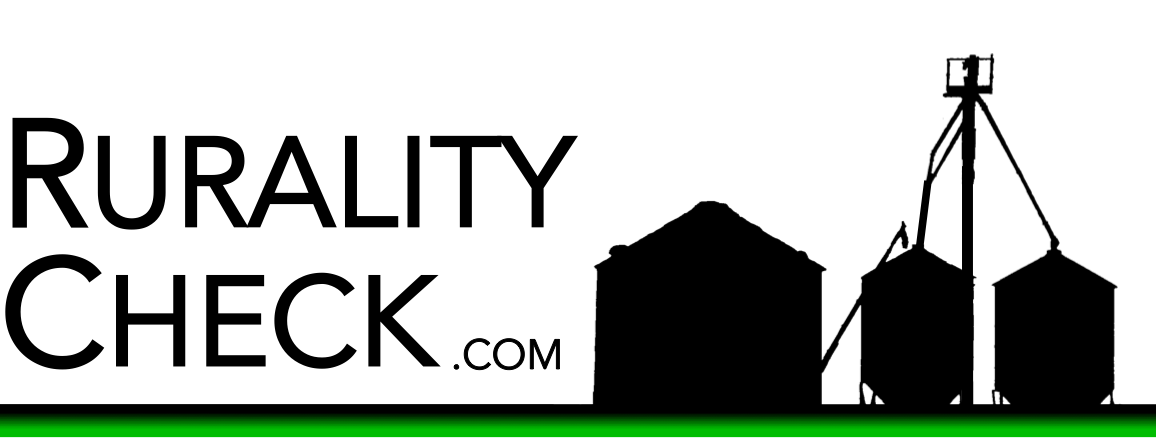
The gnome was on its ass, face up, smiling. It had obviously been in a street fight, and lost to the street—or driveway, anyway. The tan-and-rusted minivan doing its predawn rounds with hazards flashing had wandered off that driveway, its right-front wheel settling the landscaping rock, bumpering my lawn gnome, undoubtedly while the semi-asleep and fully distracted driver dropped the pink plastic baggie full of soy-based glyph out of the ever-open window.
You’d think smoking with that much newspaper in the car would be a fire hazard. And who chain-smokes at five in the morning?
My postdawn autopsy of the gnome and my oh-so-lovely landscaping wouldn’t warrant another phone call—I didn’t have the requisite twenty-two minutes of being told that my call was “very important to us.” Not “important,” mind you—“very important.” So much for the print media’s obsession with concision.
Not that those calls had helped any other time. Last time, Very Nice Lady on the other end had informed me that she would make the all-important “note of it,” which she probably wadded up and stuck into the wrist of her sleeve, next to the inevitable Kleenex. No, she said, the delivery drivers were independent contractors, meaning that The Paper had no control over them.
Sure, sure. Support Local Journalism, they said. So I did—tried, anyway. And The Paper was the only game in town—it’s not like I was going to go anywhere else.
But my first phone call, to set up a subscription, should have been a clue. I had spoken to Original Very Nice Lady, who very nicely explained the options and took down my payment information at very warp speed, which is to say that her fingers must have been as warped as her hearing: very. The waiting and the being “very important” and the repeating myself took probably, say, twenty-two minutes, and after suffering through my painstaking interaction with Original Very Nice Lady, I realized why I had waited, very importantly, for so long.
But why should she hustle? Again: the only game in town.
And boy did I wait for that first paper. I had called Original Very Nice Lady on a Friday; the first delivery couldn’t be until Tuesday, I was told. But in the name of Supporting Local Journalism, I said okay, and bought the Sunday edition at the supermarket.
Tuesday came, but my paper didn’t. I called to report the problem, and found another: Original Very Nice Lady had mis-entered my phone number, perhaps because she couldn’t hear me, or had a rheumatoid error rate, or typed it with her elbows. Whatever. Because my number wasn’t in the system, I got to wait… let’s say twenty-two minutes… listening to Very Nice VoiceOver Lady tell me that my call was “very important to us.” Which I had begun, even by then, to doubt. My check was very important, probably, but not so much my call.
The paper showed up a like thief in the noon hour.
But a misdelivered paper or five and a skittering lawn gnome or three can just… happen, I guess, even over the course of just a few months. And eventually the paper did arrive every day, at least most days. But when I finally did get my paper, I was underwhelmed by the Local Journalism that I had been so eager to Support. You know, the hard-hitting journalism that covers school-board meetings, and city-council meetings, and local elections. It turns out that school-board meetings happen once a month. Same with the city council. Local elections happen… every two years.
But again, the paper comes every day, at least most days. And, therefore, the chasm widens between the news that’s fit to print and the news that gets to print.
That chasm is usually filled with other local stories. After all, in a daily paper there’s got to be a headline every day, and that headline can accompany a 9”x12” picture of a giant inflatable yellow duck, in a not-so-hard-hitting story about how the yearly Something Or Other Festival is indeed yearly this year, too, and is happening this weekend. Which you already knew, because traffic had been rerouted all week to make room for the outdoor stage and beer garden and unironically adjacent line of eighty-four Port-A-Potties for the Late-Night Thump-a-Dump.
Headline news, apparently.
Also, see page A8 for a half-page spread listing the Festival’s full calendar of events, as if I’m going to cut it out and fold it up and carry it in my back pocket, next to my smartphone. By the way, see further details or up-to-the-instant schedule and weather changes at SomethingOrOtherFestival.org.
But Support Local Journalism, they said. Hard-hitting, important issues, they said. Fair enough—that stuff is important. But in that small town I call Home, we didn’t have a beat writer for the school district. Or the city council. The school board was already a sizable portion of the town’s pool of school-board candidates: non-elderly adults who were neither teachers nor married to teachers. Not very many of them, see. The city council plucked another harvest from the pool of the civic-minded who hadn’t lost their marbles. Long story short, most anyone who cared about the school board or the city council already knew what was going on. There wasn’t a beat writer for “hard-hitting analysis.” There were meeting minutes in the paper, maybe.
And that paper was weekly, not daily. That weekly paper somehow managed to convey the minutes from meetings of the school board, and the city council, and the county commissioners, and the township boards, probably. And election results. And records of real-estate sales. Some op-eds, too, often from the same seven people with an ax to grind and a lot of time.
Of course, as a governmental system gets bigger, a smaller proportion of the populous is directly involved in such things. And maybe a bigger system with different accountability and different transparency should indeed have a paper with a “beat writer” who documents such things, and gets to the bottom of crucial things. I guess that makes sense.
But it doesn’t scale. When I was growing up in the 1980s and 90s, my family got two newspapers: a daily from the regional hub an hour (and a state) away, and the town paper on Wednesday. Getting the daily paper from the hub made a certain kind of sense: it was the closest outlet for regional and state-level news. Sure, the TV news covered those issues, too, but in mere seconds, and superficially. The regional daily paper was where we could read in greater depth about “bigger” news, as in geographically bigger: regional, state, national, and international. Our little town was barely ever mentioned in the big paper—we bought the local weekly for the local stuff, and the bigger daily for the bigger stuff.
And the differences were clear. The local weekly included a lot—a lot—of pictures of local kids. Local sports. Musicals. One-act play. Riverwatch team. Was there a picture of Tommy in the article about the football game? The local paper in small towns is partly a newsletter for the school district. I mean that in a good way—it’s not just an organ for the district about the important, controversial stuff, like school consolidation and bussing and referenda, necessarily. But because there’s less “news” in a small town, all the extracurricular activities are documented in the local paper. It’s kinda nice.
And no one seems to mind, either, because most everyone recognized most of those faces. Oh, look: the Henderson boy is going to the Academy—good for him. I’ll be sure to talk to his parents at church. Or, I saw that Coach got inducted into the State Hall of Fame—he’d never mention it himself, so I’ll be sure to bring it up next time I see him. (Probably at church.)
This kitschy Local News is clearly different than the important Local News, but it’s all “Local News” in the sense that it happened this week, and it’s all in the paper. The kitschy stuff might even dominate the front page, but only because that’s what people read first. That model works in tiny towns, where everyone’s more closely connected to most Local News.
But in the big daily paper that we got from the regional hub, the local news had a different flavor. We didn’t recognize any of the people in that local section, which makes sense because we didn’t live there, but I wonder how many people who did live there also didn’t recognize the faces. Actually, the “local” section of that regional daily paper wasn’t very big—added up over the week, it might fit into our town’s weekly paper. Regardless, we just tossed that section out, or used it to protect the garage floor from drips from painting our Cub Scout birdhouses.
We cherished the sports page, though. Most mornings, or at least most mornings in the summer, the bigger daily paper was my source for box scores, standings, feature pieces, and profiles of sports heroes, which to my mind could just as well have been limited to Kirby Puckett. Sure, if the Twins were playing on the West Coast, yesterday’s article might not be in the paper, and I’d have to wait an extra day, but that was okay: they were playing on the West Coast all week, and I’d just be a day behind—I would be none the wiser. (Geeky baseball note: this was a bigger deal before division realignment in the mid-90s; before that, the Twins were in the AL West, and routinely would play in Seattle, Oakland, and Anaheim, two time zones away.)
After I was done with the sports section, I’d read the comics: usually Garfield, The Far Side, Calvin & Hobbes, and FoxTrot. My parents took the other sections and read about Mondale or Yeltsin or Dole, or whomever.
All of this kinda dates me, I guess, but that’s kinda the point. A lot of digital and soy ink has been spilled about the rise of the Internet and the doom of newspapers. I get it, I think—but I don’t understand why we get away with using one word, “news,” in all of those conversations. Not all news is created equal, obviously: there’s sports news, and national news, and state news, and regional news, and very local news. Those types of news are varying degrees of important, and varying degrees of… news, actually.
And at the localest level, in small papers in tiny towns, all news was wrapped into one package because everyone was at least mildly interested in everything in the whole paper because the whole paper was about people they knew. It was a package deal for logistic reasons—we didn’t really think of a lot of it as “news.” We knew that a lot of it wasn’t important, or hard-hitting, or even journalism, really, but it was and is the only place to get that stuff. That’s why that paper exists.
Don’t tell any of this to advocates for Local Journalism, though. We routinely hear about how Supporting Local Journalism is the only way to keep tabs on the local city and county and school administrators, and how having beat writers—full-time, usually—is the only way to expose corruption and keep an engaged, informed citizenry. I’m not even arguing that point—I’ll grant that those things surely help, and the systems in place where I grew up can quickly fall apart past a certain size where everyone can know each other.
The more interesting point is that we are painting Local Journalism—this valiant thing that should be protected in order to preserve the very fabric of our democracy, apparently—with too broad of a brush. The so-called Local Journalism in the paper that I got from those Very Nice Ladies and an incompetent fleet of delivery drivers had seemingly very little hard-hitting journalism, or journalism at all, and a lot of pictures of giant inflatable yellow ducks and half-page action shots of the local college hockey team.
Which is its own point. I live in a micropolitan area, a regional hub, with a good Division-I men’s college hockey team. Best I can tell, the regional daily paper that counts as Local Journalism where I live pays a person to follow around a squad of twentysome twentysomethings for six months of the year, and talk to the same head coach forty-seven times throughout the season: preseason, pregame, postgame, pretournament, posttournament, postseason, offseason, etc. Maybe this Very Diligent Beat Writer does other things, too—maybe he’s the food critic. But college hockey is played at most two times a week—on weekends, to boot—and I don’t need a paid food critic ever, really, thank you.
If the games are on the weekends, what does Very Diligent Beat Writer do during the week? Or, more to the point, what do those of us who succumb to Supporting Local Journalism pay this man to do? Weekday stories seem to comprise deep-dive profiles on individual players and coaches and the like. But Christ, there are only twentysome of those players, and the season is twentysome weeks long, and most of the players were around last year. I feel like I know these kids better than my nephews. And the coach never says anything interesting, either: “I’m proud of our guys. We’ve got things to improve, and I thought they battled out there tonight. Credit the other team, too.” Actually, two seasons ago the coach stopped talking to Very Diligent Beat Writer for a while and fans managed just fine, which really calls the whole enterprise into question. Also, because the hockey team is in a top hockey conference, national outlets routinely provide game analysis and team news. For “free.”
But Support Local Journalism.
The hockey example is a good one because I’m actually a big college hockey fan: I have season tickets at two different schools, and I go to both women’s and men’s games. I’ve even written articles for national college hockey outlets. But if I give in to the browbeating about Supporting Local Journalism because of the Important Stuff, I get an entire section of the paper devoted to the stuff that can’t ever be labeled as Important or hard-hitting (at least in the journalism sense; hockey pun intended). It’s not even interesting: unlike the small paper at home, I don’t know these kids. I surely don’t know all of them, anyway—in a big(ger) city, no one can.
So, I get hoodwinked into Supporting Local Journalism and instead get page after page after page, day after day after most days, of giant yellow ducks and lovely human-interest stories about people I don’t know. And profiles of the athletic flailings of a bunch of kids whose names I don’t recognize. And I’m paying the Very Diligent Hockey Writer the same as, if not more than, the person who occasionally tells me something worth knowing about the city government or the school.
Frankly, I can see how this system might be struggling financially.
You know what else has pictures of big yellow ducks and lovely human-interest stores about people I don’t know and profiles of the athletic flailings of a bunch of kids and men and women… whose names I actually do recognize?
The Internet.
The Internet hasn’t rendered Local News obsolete. It’s laid bare the obsolescence of the newsprint model, where a regional company used to claim a monopoly on News. The old model had a lot of tiny papers and a bunch of mid-sized papers and a few big ones; people often subscribed to more than one for different things. But at the lowest level, the tiny-town level, there was an understanding that local news is important, but not all local news is important. So, here you go: a twenty-two-page newspaper with school-board minutes and football pictures and an article about the Boy Scout troop. You’re welcome—it’ll come out every Wednesday.
Thank you, actually. That stuff is still important. All of it, really.
But in the mid-sized places, it’s not that most of that stuff isn’t important anymore, it’s that most of that stuff was never important to most people. People in mid-sized cities never cared (as much) about the paper’s football recap the next morning, even as much as people in tiny towns cared about the football recap five days late—they probably didn’t know anyone in the pictures. Ditto with the Boy Scout troop and the pancake breakfast and the two new (volunteer?) firemen and the fact that the town got a new ambulance (good job, Katie).
But mid-sized daily papers used to attract readers from both the mid-sized and the tiny towns because they were the principal source for national and international news—that was the root of the economic model, yes? Well, as we all know, the Internet, and especially the smartphone, ended that. Suddenly it does matter that the Twins’ box score isn’t in the paper when the team is on the West Coast—I can go online. In fact, I was following or watching the game on my phone, and I knew the final score the instant that the mid-sized paper’s beat writer did. On the whole, that’s not necessarily a bad thing.
Suddenly Calvin & Hobbes’s four black-and-white panels, brilliant as they may have been, can be replaced by the entirety of YouTube. That might be a bad thing, actually. But you get the point.
Newsprint as a model can’t compete in a twenty-four-hour news cycle—that’s obvious, but that shouldn’t bother Local News specifically. Nothing within the purview of a local newspaper at any level needs instant coverage: in small towns, everybody either already knows or is willing to wait until Wednesday; in mid-sized or large cities, the TV station is on it. The more in-depth stuff can come out a few days later. Even with daily papers, we usually end up waiting a couple of days, anyway. It’s been this way since local television popped up in the middle of the last century. This is not… news.
Which reveals an uncomfortable truth: Local Journalism, reported at length, is indeed a public good, or maybe a public great, but Local Journalism was never really the heart of the economic model of local newspapers, especially daily ones. Regional daily papers made their money because people came to them for… everything that was happening “currently,” regardless if it was important, or even regardless if it was news: classified ads (gone with Craigslist), the sports section (gone with ESPN, and then ESPN.com, and now The Athletic, which people do pay money to read), and national and international news (replaced by Cable News, then CableNews.com, and now an absolute explosion of media catering to your exact angle of political leaning). Nowadays, there’s an app for that. No reporter, or editor, or delivery driver, or Very Nice Ladies required.
Newspapers aren’t dead: the regional daily newspaper is dead. Local news isn’t dead: we are euthanizing local news organizations that cry “Local Journalism!” but usually bury that Local Journalism in Section C of a daily paper full of inflatable ducks and re-tread national headlines and daily sports headlines for football and hockey games that are only played Friday and Saturday. Technology has leveled the model wherein a bunch of regional papers all printed the same national, international, and sports stories.
And is that such a bad thing?
Viewed this way, the oh-so-earnest calls to support a regional daily paper as a means of Supporting Local Journalism are… odd. Laughable, maybe. Most of that regional daily paper isn’t even local or journalism. It’s like demanding you need your daily heart medication but delivering it in a bushel of marshmallows. And charging for the marshmallows. And for the extra-large basket.
Fluff, every day.
Somehow, people in small towns get by with local news less often. Sure, it’s a small town, so there’s a lot less of it, but we don’t pretend to need it every day. And sure, I’ll say again that bigger systems with different community dynamics might demand hiring reporters to cover more local news. But that’s different than demanding that every micropolitan area in America publish a baby New York Times every morning. For those who haven’t heard, even the New York Times isn’t the New York Times anymore.
Let USA Today be USA Today, and turn the local daily into all that ever made it special: The Stearns County This Week.
Which is a semi-serious proposal. We still need our heart medication, after all, and after technology forces regional papers to scrap the marshmallows, our basket is going to get much smaller. To stretch the metaphor further, you usually buy your heart medication thirty or sixty days at a time in a pretty small bottle—I’d settle for seven days at a time in a pretty small paper. I’d buy local news again—I ended my subscription because I thought I was paying for a lot of fluff; also, my gnome’s health—if local news is what they were actually selling. That caliber of news, even in a micropolitan area, just doesn’t happen every day, or even often enough to warrant paying for a daily paper, fifty pages thick, one day old.
Small-town papers have written exclusively about local news for decades. Because there isn’t enough going on in a small town to fill a weekly paper, the pages also include pictures of junior-varsity basketball teams and Boy Scouts and lots and lots of old people—in micropolitan areas, nobody knows a high enough percentage of the people to make that stuff interesting, so scrap it. Instead, fill the twenty-two pages with in-depth, long-form, hard-hitting reporting about stuff that matters. Let people go to Facebook for the rest. Or, don’t put it on pages at all—run it all online. Whatever. I’d buy that again. I think a lot of people would. And I’d think the overhead and personnel would shrink faster than the subscription rates. Maybe subscriptions—and therefore advertising—would actually grow, because it would be a better value.
Regardless of the economics of the future of mid-sized papers, let’s stop the old canard that equates Supporting Local Journalism and supporting local daily newspapers. Most daily papers survived and thrived on the excesses and redundancies of regional monopolies that no longer exist. Those papers attracted readers with stories that were not local (national news), not important (sports and local human interest), or not really journalism at all (classified ads, comics, and obituaries). Don’t scold Americans for not supporting Local Journalism when they refuse to spend money on daily papers that are mostly neither local nor journalism.
That’s like demanding that you support the local McDonald’s so you’ll have a place to buy salad—sure, it’s on the menu, but most of the flashy pictures are of something else, and you have to hunt for it.
I’d like to Support Local Journalism—charge me for Local Journalism. Give me a stripped-down subscription to only local and state stories online—I’ll take the 78% discount, thank you. Or, give your real journalists some real room and some real time to write about some real news, once a week. Think less New York Times, and more New Yorker, but instead of “Talk of the Town,” it’d be “Talk of the Township.” I’d pay for that, too.
The end of the daily paper? That doesn’t bother me. I’m from a small town—I’m used to waiting for Wednesday.

P. A. Jensen (@RuralityChecker) is editor of RuralityCheck.com.
He lives in Minnesota with his wife and son.



